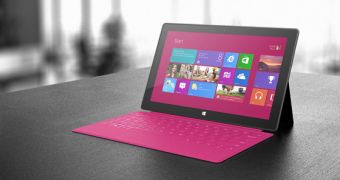If you’ve already ordered a Microsoft Surface tablet, go buy some ibuprofen, as some of your peripherals may not be supported by Windows RT.
Several Hewlett-Packard and Dell printers and multifunction devices are marked as incompatible with the Windows version deployed on Surface devices.
HP’s very own list comprises a total of 200 LaserJet and ColorJet laser printers and multipurpose units, out of which 83 aren’t compatible with RT, TechWorld writes.
34 are fully supported by this Windows version, while another 83 come with “limited support,” so you won’t be able to access advanced printing options.
Dell, on the other hand, has only 32 supported printers of the total 110, which could be a bit worrying for all those who have previously acquired a Dell-branded inkjet or laser printer.
This issue isn’t quite new, however, as Microsoft had already announced earlier this year that Windows RT and Windows 8 wouldn’t support some printers.
The reason is as simple as it could be: the company aimed to make the printing process faster and simpler, so the 32-bit processors installed on Windows RT tablets can only handle newer devices.
“We really wanted to ensure that we didn't negatively impact ARM systems by running unnecessary services, and we wanted to reduce system resource usage, while still providing support for as many devices as possible,” Steven Sinofsky, president of the Windows and Windows Live Division, said a few months ago.
While this could be indeed a major issue for some Windows RT users, the problem is a lot more worrying for Surface buyers. A similar glitch could affect other peripherals too, including cameras and scanners, Nathan Brookwood, principal analyst at Insight 64, warned.
Paradoxically, Microsoft’s Surface team said in an IAmA session on Reddit that the newly-released tablet supports millions of USB devices, including printers and cameras.
“The full size USB 2.0 port on Surface supports hundreds of millions of devices that are out there... We chose USB 2.0 based on capability of the ARM SoCs during our development timeframe,” a member of the team explained.

 14 DAY TRIAL //
14 DAY TRIAL //